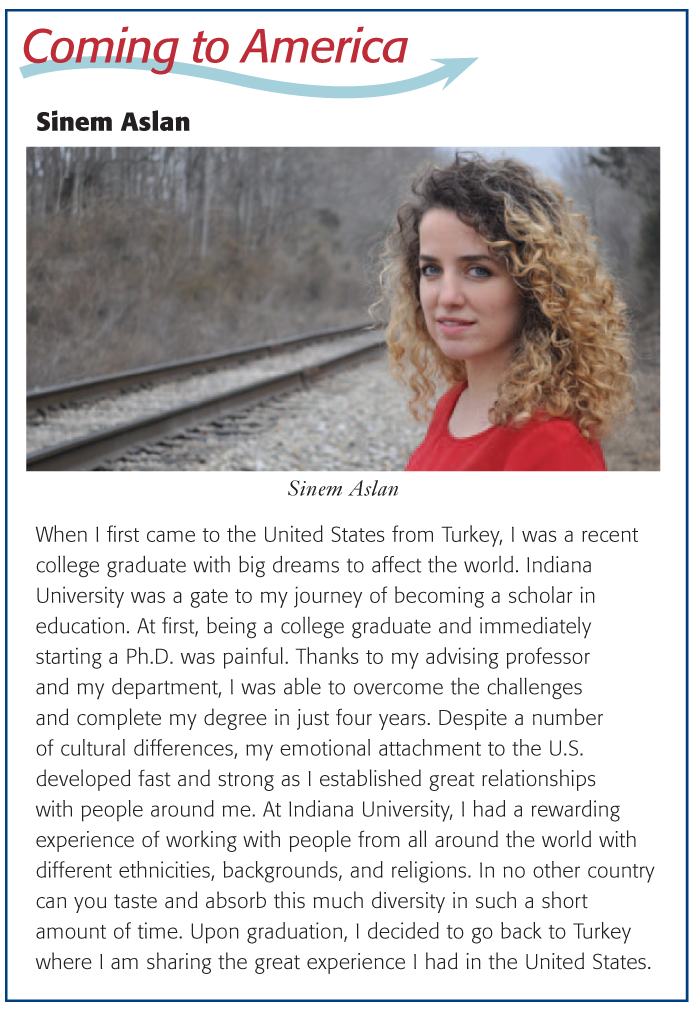 Student projects form the base of this school’s learner-centered education regimen, but an examination of problems encountered during implementation underscore that it is not easy.
Student projects form the base of this school’s learner-centered education regimen, but an examination of problems encountered during implementation underscore that it is not easy.
Schools are slowly but surely transforming from the large, impersonal, factory-model organizations of yore into human-centric spaces. This transformation entails creating smaller, caring communities of learning, fostering intrinsic motivation, and using both self-directed and active learning. Charter schools were early adopters of this transformation as they have the autonomy to implement nontraditional, educational approaches, but they still face challenges in implementing such a different paradigm of education.
The Minnesota New Country School (MNCS) in Henderson, Minn., has been operating as a learner-centered school since 1994 and is recognized as one of the best learner-centered schools in the country. In 2006, the U.S. Department of Education named MNCS as one of the top eight charter schools in the U.S.; it’s also been called “the coolest school in America” (Thomas, Enloe, & Newell, 2005). The school’s administrators and teachers (called advisers due to their radically different role from traditional teachers) acknowledge that implementing learner-centered education can be challenging, which makes MNCS an ideal case to study.
Learner-centered schooling offers many benefits to students, but it also presents many challenges to students and educators.
At the time of this study (April 2012), MNCS had about 110 students in grades 6-12. Students came from diverse backgrounds and socioeconomic status, with about 30% qualifying for free or reduced-price lunch. According to the school’s annual report for the 2010-11 academic year, the average ACT score for all MNCS graduates was 25, compared to the national average of 21.1.
MNCS uses a self-directed, project-based learning approach for learner-centered education. Each student selects an adviser who typically works with the student until graduation. Instead of courses, students have self-directed, project-based learning. Students design their own individual projects geared to meeting state standards. Advisers approve student project proposals, monitor student progress, and assess student learning. Math is the only subject that is not part of project-based learning. Instead, the school uses ALEKS Math in individualized computer study. [For more information about MNCS, see www.new
countryschool.com; Thomas, Enloe, & Newell (2005); Aslan, 2012; Aslan, Reigeluth, & Thomas (2014); and Reigeluth & Karnopp (2013).]
The participants in this study included all nine advisers, the school principal, a co-founder, and a founding member. These advisers and administrators were interviewed because they were likely to have the most experience with challenges to learner-centered education.
During one-hour interviews, the school administrators and advisers described challenges to learner-centered instruction and learner-centered assessment.
Learner-centered instruction
Administrators and advisers identified four major challenges to learner-centered instruction:
- Student mindsets. Making the switch from passive, teacher-directed learning to active, self-directed learning.
- Adviser time. Juggling multiple demands from managing many student projects.
- Math. Excluding math from project-based learning because of the unique character of math learning.
- Consistency across advisories. Ensuring consistent grading practices and achievement of mastery by students.
Student mindsets
All 12 participants said the biggest challenge to implementing learner-centered instruction is the mindset that students have about how schools operate. Students who were used to a more traditional experience often have a difficult time acclimating to this very different learning environment. The founding member explained how this challenged the advisers:
The No. 1 issue is training in the sense that the students become self-directed. [Previously] they have been directed, totally directed: ‘Do this, do it that way, oh no, don’t do it that way, oh you have to do this.’ And then they come to an atmosphere where they advise us as to what they want to learn about, and it just all of a sudden blows their mind. They don’t know how to act. They don’t know what to do. So, it takes a number of months really of coaching to get students to become self-directed. Some [students] take to it right away, some take months and even years to figure out the process.
There are two core values of the school: choice and responsibility, which means that students also have to learn how to hold themselves accountable and how to be responsible for their own learning. Project-based learning gives students more freedom and voice in their education; the side effect is that students have a lot of responsibility to drive their own education. Not all students are ready to take such ownership of their learning, and helping students develop such responsibility is one of the greatest challenges for advisers.
Self-regulation is key to student success in a learner-centered school, but many students enter without self-regulation skills and mindset. Advisers have to learn how to help students become self-regulated.
Adviser time
Each adviser had only 12 or 13 students, but each student could have multiple projects. In some cases, advisers felt they didn’t have enough time to work with each individual student when she or he encountered problems. One elementary education and coaching adviser described the dilemma:
The time that’s required to have a PLP [Personal Learning Plan] with that many students and keeping them accountable for what they said they were going to do, that’s probably the most difficult part for me, the most stressful part. You want them to succeed, but you also have to make sure that you are tracking where they are. . . . My biggest [challenge] here is the amount of time that it takes to do that and trying to do everything that we know is best for the students and then also do all of the stuff that the state says is best for the students.
A language arts adviser said balancing student projects with other responsibilities could be overwhelming, especially for new teachers.
Math
MCNS had to abandon project-based learning for math because some new students had up to two-year deficits in their math learning when they enrolled at the school. Using ALEKS Math — a self-paced, personalized, online, math learning program — overcame this challenge because it is a quicker way to fill those gaps. The state requires students to move quickly in terms of meeting the state standards to graduate.
“If students . . . don’t pass those math tests, then the school is suspect, could even lose its funding, and so forth,” said one adviser, adding that it proved too difficult to incorporate the many and varied math concepts — algebra through to calculus — into projects. “It’s almost impossible to do,” he said.
Consistency across advisories
Each adviser implemented learner-centered instruction with slight variations. According to a special education adviser, these slight differences or inconsistencies resulted in mixed messages across advisories:
Trying to be consistent across the advisories is important and can sometimes be frustrating because approaches can be different, and, while the advisers’ beliefs are essentially the same, their techniques or strategies can be totally different. . . . The people who work in special education see it [inconsistency] more than the advisers do because we work with children in each of the [advisories in the school], so if one adviser is doing it one way and another adviser is doing it another way, it’s not wrong, it’s just not consistent, and . . . it can create mixed messages for staff and students, too.
Learner-centered assessment
Advisers and administrators named five challenges to doing learner-centered assessment at MNCS:
- Mastery judgment. Deciding when a student reaches mastery.
- Credits and standards. Deciding how many credits students should earn for projects and how they should apply to standards.
- Subjectivity. Relying on individual teacher evaluations of student performance.
- Learning versus time. Deciding whether time on task or quality of work was most important.
- Adviser time. Balancing the demands of the work.
Mastery judgment
Four advisers said they found it difficult to decide whether a student had reached a certain level of mastery when evaluating the project. One adviser said students’ grade-level differences presented the greatest dilemma for her.
It can be challenging . . . at times to prove that students are demonstrating [mastery] . . . because the topics that kids are choosing to do projects on are . . . so varied. And, of course, what’s mastery for a student who is a 6th grader is a totally different concept than for one who is in the 11th grade. We don’t expect 6th graders to do a 10-page research paper, but we expect 12th graders to be able to find real research studies, analyze the data, and then relate that to a topic within their senior project.
Credits and standards
Similar to the challenges faced when deciding on mastery, five of the advisers pointed to challenges in deciding how many credits each student had earned or which standards each had accomplished based on their performance on the projects. This was compounded when projects were outside the subject areas of the advisers on the proposal team. One adviser said communicating with other advisers when there were disagreements about credit was usually enough to resolve the situation.
Subjectivity
In the school, performance on projects was used as an indicator of learning. Therefore, a student’s progress during a project and artifacts that he or she created at the end of that project were major data points for the assessment. Four advisers were concerned about the subjectivity for such an assessment. One adviser said the school reduced subjectivity by using multiple raters to evaluate big projects. However, she said advisers evaluated smaller projects on their own, making consistency across the advisories more difficult.
Learning versus time
An elementary education and agriculture vocational adviser voiced concern over the conflict between learning outcomes and learning time when assessing student projects because the number of hours devoted to a project was a part of the assessment piece. One said that time logs where students entered their time on a project would show that the student spent many hours on a project, but the product could still be weak. Conversely, sometimes the student spent little time on the project, but the product was amazing. Advisers had to decide whether time on task or quality of work was more important when trying to make a fair judgment. The same issue applied to individual differences among students:
You have some students who can do … [an] unbelievable project in two or three days. … [For] another student to complete the same project, it might take them two to three weeks. . . . the student who can do it in two or three days says, ‘OK, if I can do this project in two or three days, then I should [be allowed] to spend a lot less time studying, … and some of the staff members will go along with that, too. . . . My thought is that if you have an exceptional amount of ability to accomplish things, shouldn’t we still ask you to . . . be fully engaged all through your school time to accomplish things? Maybe you can accomplish five times more than the other students, but shouldn’t you be expected to do that, because you can just be better for it in the end anyway?
Thus advisers struggled to balance their evaluations of student projects in terms of the amount of time invested and the quality of the end product — especially when considering individual differences.
Adviser time
Just as with learner-centered instruction, learner-center assessment also consumed a great deal of adviser time. Four advisers said assessing student work required a lot of time since they had to read each individual time log (i.e., reflection posts) as well as evaluate the quality of the product at the end of the project. Two advisers said time was the toughest challenge when considering the amount of personalized learning taking place in the school.
Conclusion
Learner-centered schooling offers many benefits to students, but it also presents many challenges to students and educators. From the experience at the Minnesota New Country School, we have learned that schools interested in moving in this direction must be prepared to help students adopt a different mindset about their education, one in which they think about their future, have the power to pursue their interests, and assume responsibility for their learning. Schools also must identify tools that can help save adviser time in monitoring student progress and determining when mastery of a standard has been reached.
Advisers had to decide whether time on task or quality of work was more important when trying to make a fair judgment.
Learning math through project-based learning at MNCS presented a special challenge, and educators there agreed that mastery in math requires repeated practice of math skills that does not happen in authentic projects. Successful teaching and learning in mathematics requires tutorial tools, and a school should consider making similar tutorial tools available for developing other skills needed in projects.
Teachers at learner-centered schools need help identifying ways to decrease subjectivity in determining mastery, and increasing consistency across advisories in situations where that benefits student learning while recognizing that some differences (inconsistencies) can still be good for students. Teachers need assistance in determining how to award credits based on mastery of standards (using clear criteria or rubrics) rather than based on learning time, and they also need to be able to challenge faster learners to take on new standards in new projects.
There are many challenges for schools to transform from the teacher-centered paradigm with time-based student progress to the learner-centered paradigm with learning-based student progress. Yet MNCS provides evidence that the benefits for students are significant. They do not accumulate deficits in their learning that make it harder to learn related material in the future, as under time-based student progress. They develop both a love of learning and the self-regulation skills to be effective lifelong learners. And the advisories, which focus on developing strong relationships among peers and keeping the same caring mentor for however many years the student wants, result in strong social and emotional development that greatly reduce such psychological and social problems as bullying, drug use, violence, and high crime rates. To make this transformation easier, MNCS, with funding from the Gates Foundation, created a nonprofit organization called EdVisions to help other schools navigate such change.
The greatest challenge of all is for educators and policy makers to understand that piecemeal reforms cannot meet our current educational needs. Only a paradigm change — from teacher-centered instruction, time-based student progress, and norm-referenced assessment to learner-centered instruction, competency-based student progress, and criterion-referenced assessment — can meet the needs of all students and truly leave no child behind.
References
Aslan, S. (2012). Investigating “the coolest school in America”: A study of a learner-centered school and educational technology in the information age. (Unpublished doctoral dissertation). Indiana University, Bloomington, IN.
Aslan, S., Reigeluth, C.M., & Thomas, D. (2014). Transforming education with self-directed project-based learning: The Minnesota New Country School. Educational Technology, 54 (3), 39-42.
Reigeluth, C.M. & Karnopp, J.R. (2013). Reinventing schools: It’s time to break the mold. Lanham, MD: Rowman & Littlefield.
Thomas, D., Enloe, W., & Newell, R. (Eds.). (2005). The coolest school in America: How small learning communities are changing everything. Lanham, MD: Scarecrow Press.
WestEd. (2006). Charter high schools: Closing the achievement gap. Washington, DC: U.S. Department of Education, Office of Innovation and Improvement. http://1.usa.gov/1ZzzEDM
Citation: Aslan, S. & Reigeluth, C.M. (2015). Examining the challenges of learner-centered education. Phi Delta Kappan, 97 (4), 63-68.

ABOUT THE AUTHORS

Charles M. Reigeluth
CHARLES M. REIGELUTH is professor emeritus in the School of Education at Indiana University, Bloomington, Ind.

Sinem Aslan
SINEM ASLAN is a senior research scientist at Intel Corp., Istanbul, Turkey.










